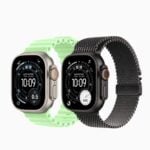When looking to buy a new iPhone, customers can choose from a variety of models and service plans. Each model comes with distinct features and capabilities, and various carriers offer different deals. Some consumers prefer the latest model with cutting-edge technology, while others may opt for a previous version for cost savings.
Before making a purchase, it is important to understand the different iPhone models available and their respective features. Purchasers should consider their usage patterns, such as camera quality for photography enthusiasts or battery life for those who travel frequently. It is also wise to explore payment options, as some may prefer to pay in full while others take advantage of installment plans or trade-in offers.
Planning a purchase entails more than selecting the right model; it includes considering carrier contracts, warranty options, and the potential resale value of the phone. Informed buyers will also look for promotions and special offers to get the best deal possible.
The Best Ways to Buy a New iPhone: A Comprehensive Guide
Buying a new iPhone is an exciting experience, but with so many options available, it can be overwhelming to choose the best way to purchase one that fits your needs and budget. Whether you want the latest model, the best deal, or flexible payment options, this guide will help you navigate the process and make an informed decision.
1. Buy Directly from Apple
Why choose Apple?
- Guaranteed authentic products.
- Access to the full range of models and configurations.
- Options for customization (e.g., storage size, color).
- Trade-in program to reduce the cost.
- Financing options via Apple Card Monthly Installments.
- Free engraving on some models.
- Access to AppleCare+ for extended warranty and support.
How to buy:
- Visit an Apple Store or the official Apple website.
- Use the Apple Store app for a seamless mobile experience.
- Consider buying during Apple’s product launch events or seasonal sales.
2. Purchase from Authorized Carriers
Benefits:
- Often offer carrier-specific deals, such as discounts, trade-ins, or bundled plans.
- Monthly installment plans tied to your phone contract.
- Possibility of zero or low upfront costs.
- Convenience of activating the phone on the spot with your carrier.
Tips:
- Compare offers from major carriers (Verizon, AT&T, T-Mobile, etc.).
- Check for promotions like buy-one-get-one or discounted accessories.
- Be aware of contract terms and early termination fees.
3. Shop at Major Retailers and Electronics Stores
Popular options:
- Best Buy
- Walmart
- Target
- Amazon
Advantages:
- Competitive pricing and occasional sales.
- Bundle deals with accessories or services.
- Flexible return policies.
- Some retailers offer open-box or refurbished models at lower prices.
What to watch for:
- Verify the seller’s authenticity on platforms like Amazon.
- Check warranty coverage and return policies.
- Look for seasonal sales events like Black Friday or back-to-school promotions.
4. Consider Certified Refurbished or Used iPhones
Where to buy:
- Apple Certified Refurbished Store.
- Trusted third-party sellers like Swappa, Gazelle, or Amazon Renewed.
- Local marketplaces (Craigslist, Facebook Marketplace) — exercise caution.
Pros:
- Lower prices compared to brand-new models.
- Apple Certified Refurbished devices come with a warranty and have been tested.
- Environmentally friendly choice.
Cons:
- Potentially shorter lifespan or previous wear.
- Limited or no warranty on some used devices.
- Risk of scams or locked devices if buying from individuals.
5. Trade-In Your Old Device
Many sellers, including Apple and carriers, offer trade-in programs.
Benefits:
- Reduce the upfront cost of your new iPhone.
- Easy and secure way to recycle old devices.
- Instant credit or gift cards.
How to do it:
- Check your device’s trade-in value online.
- Back up and erase your old iPhone before trading in.
- Use trade-in credit toward your new purchase.
6. Financing and Payment Plans
If paying upfront isn’t ideal, consider financing options:
- Apple Card Monthly Installments: Interest-free payments directly through Apple.
- Carrier Financing Plans: Spread payments over 24-36 months with your carrier.
- Third-Party Financing: Services like Affirm or PayPal Credit may be available at some retailers.
Final Tips for Buying Your New iPhone
- Research the latest models: Understand the features to pick the right one for you.
- Check compatibility: Make sure the iPhone supports your carrier’s network bands.
- Backup your data: Before switching devices, ensure your data is safely backed up.
- Beware of scams: Only buy from reputable sources.
- Timing matters: Prices may drop after new releases or during sales events.
Buying a new iPhone is a significant investment, but by exploring these options and planning ahead, you can find the best deal and enjoy your new device with confidence. Whether you prioritize convenience, cost savings, or the latest features, there’s a buying method that fits your needs perfectly.
Key Takeaways
- There are various iPhone models and service plans to fit diverse needs.
- Understanding features and comparing models can guide customers to the appropriate iPhone.
- Strategic planning helps buyers optimize their purchase in terms of cost and value.
Understanding iPhone Models and Features
Choosing the right iPhone requires understanding the variety of models and features available. Apple’s lineup has expanded to offer a range of devices suited to different preferences and needs.
Comparing iPhone Models
When selecting an iPhone, size and performance matter. The iPhone SE offers an affordable entry into Apple’s ecosystem with essential features. The more recent iPhone models, such as the iPhone 13, 14, and the latest iPhone 15 series, come with significant upgrades:
- iPhone 13: Equipped with the A15 Bionic chip, this model balances cost and capability.
- iPhone 14: Introduces the A16 Bionic chip and added safety features like crash detection.
- iPhone 15 series:
- iPhone 15: Boasts a new A17 chip for enhanced performance.
- iPhone 15 Plus: Offers a larger display with the same cutting-edge internals as the iPhone 15.
- iPhone 15 Pro: Has a more advanced camera system and Always-On display.
- iPhone 15 Pro Max: Combines a large screen with the best of Apple’s technology, including a 48MP main camera.
Comprehending the differences aids in making an informed choice that aligns with personal requirements.
Feature Highlights and Innovations
The features and innovations within Apple’s iPhones distinguish them in the market. Here are some key aspects:
- Display: From the iPhone 13’s bright screen to the iPhone 15 Pro Max’s Always-On display, visuals are crisp and engaging.
- Camera System: The iPhone 14 introduced Photonic Engine for better low-light performance, while the iPhone 15 Pro Max debuts a 48MP main camera for stunning photos.
- Processor: Apple’s chips, from the A15 to the new A17, ensure rapid processing and smooth engagement with the latest software.
- Battery: Each model aims to balance performance with battery life, ensuring users can depend on their device throughout the day.
- Safety: Features like Emergency SOS via satellite and crash detection provide peace of mind.
- MagSafe: This magnetic technology allows for easy attachment of accessories and wireless charging.
The iPhone’s evolution reflects Apple’s commitment to integrating meaningful technology that enhances the user experience.
Planning Your Purchase
When buying a new iPhone, planning is key. This includes budgeting, understanding carrier deals, and being aware of additional costs.
Considerations for Budgeting
Budgeting for a new iPhone involves knowing the costs upfront. iPhones are a significant investment. Prices for the latest models like the iPhone 15 series can vary. A solid budget should reflect the phone’s price and potential additional expenses. Consumers may opt to pay in full at retailers like Best Buy or Apple’s official store. For those looking for a more affordable option, installment plans can spread out the payment. A trade-in of an old iPhone might also help lower the initial cost. It’s important to weigh these options against your budget.
Navigating Carrier Deals and Plans
Carrier plans from Verizon, AT&T, and T-Mobile often include deals that can reduce the cost of a new iPhone. Some deals may offer discounts or credit with the trade-in of an older model. Others may promote discounted plans for data and talking. When shopping for the best iPhone deal, compare these offers carefully. Look for the fine print that might hide extra fees. Plans could require activation and a commitment for a certain number of months. Understand the terms before committing to ensure they align with your use and budget.
Learning About Additional Costs and Services
Besides the base price of the iPhone, additional costs can accrue. Services like AppleCare+ or theft and loss protection add to the initial price. They provide extra security but need to be considered within the budget. Using credit cards or Apple Pay might offer cashback or other benefits when purchasing. Remember that a new iPhone may also mean needing new accessories as Apple transitions from Lightning to USB-C ports for charging and data transfer. These items will add to the overall cost of your new phone. Always factor in these potential expenses when planning your iPhone purchase.







